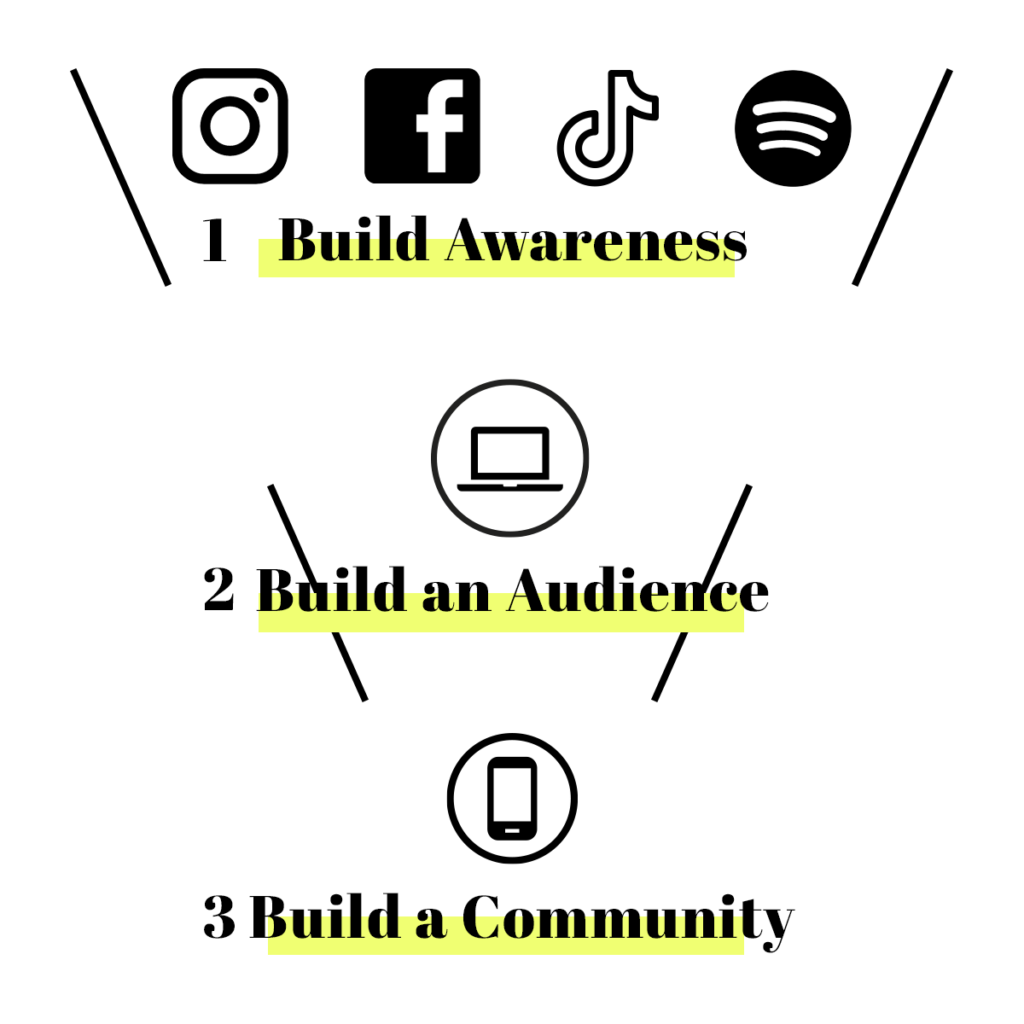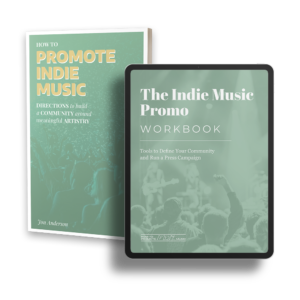Last week, I gave you my pitch that you should make music and build your audience simultaneously.
Practically, here’s how I think that works: by creating a marketing funnel.
I’ve heard other people call this a “fan journey” or “fan experience”; I’m in the marketing world, so “funnel” is the terminology I’m most familiar with. Anyway, the point is the same: There are different stages that a fan moves through as they become a part of your community.
The music-consumption-stage is only one of those. And it doesn’t have to be the first.

^That image represents what I’ve found to be the most common funnel for artists.
The flow works like this:
- People find you via social profiles.
- Some percentage of those people convert into your audience. I consider anyone you can reach again to be a part of your audience. So, an Instagram follower is part of your audience, but someone who sees your post on a hashtag and doesn’t follow you is not. Similarly, a Spotify follower is part of your audience, but someone who streams your song as part of a playlist is not.
- You convert some percentage of your audience into fans. Fans are people who have literally spent money to support you and your art. To get people to this stage, you need to build some kind of exclusive community – something like an email list, a texting group, or a Patreon page.
That’s the funnel.
And here’s the thing: Spotify is only one of the places where people can enter into it. I’d argue it’s actually one of the worst entry points, because it provides the least useful data on followers.
So, again, you don’t have to wait until you have a huge catalogue of finished music on Spotify to start building your fanbase – and you shouldn’t.
Instead, pick one social media platform to focus on for awareness generation. Right now, the best options are Instagram, Tik Tok – I used to be against it but I’m (kind of maybe) coming around – and YouTube. Other options (Facebook, Twitter) can work; the keys are that a) you pick a platform that you can enjoy being on, and b) you pick one where you can reach a large number of people.
Then, as you make music, share the process, not just the finished product. And share yourself, too.
Remember the Disney Channel lessons from last week? Miley Cyrus’ fans didn’t buy her debut album because they loved her music; they bought it because they liked her. This is not to suggest that you should make crappy music (please don’t), but it is to say that, over time, your biggest fans will ultimately care more about you as an artist than about any specific piece of music you produce.
And that’s the basic framework for how you build audience and make music simultaneously.
(I’ll cover specific tactics for reaching a big number of people in later emails – they vary from platform to platform, but there are common principles.)
To recap:
- You need a platform to reach a large number of people.
- You need a way to reconnect with the people you reach.
- And you need an exclusive community where people can take action to support your artistry.
Most of what I work on for artists deals with the optimization of this general funnel. If you can nail those three stages – awareness, audience, community – you can have a sustainable career, label or no label.
Next week, I’m going to jump to the bottom of the funnel and discuss what I see as the best ways to build an exclusive community. You’ll need one if you actually want to make a living from your music.
Also, career stuff aside, communities are what make life meaningful.

